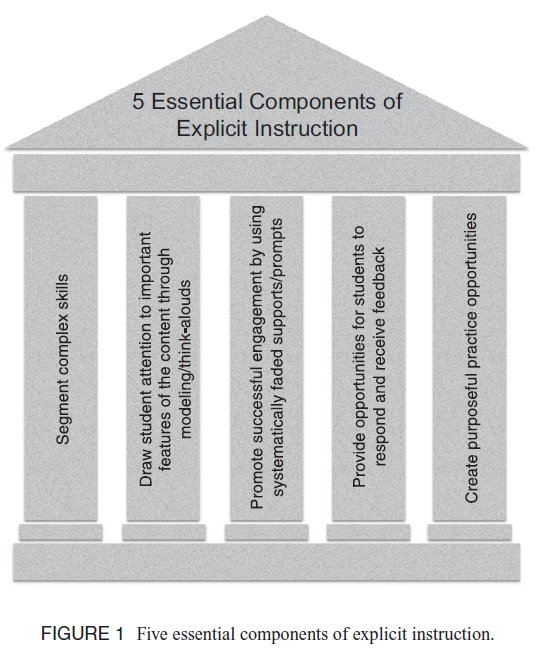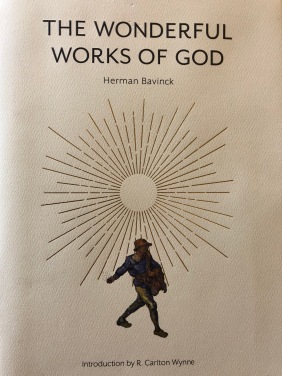I am reading through The Wonderful Works of God by Herman Bavinck and am using the free discussion guide by Charles Williams as a writing prompt in order to organize my thoughts and learn more as I study this classic Christian book.
If this interests you, please follow along and feel free comment with your thoughts either on this post or on Twitter.
I. Man’s Highest Good (p.1-7)
II. The Knowledge of God (p.8–15)
- 1 (pp.8–10): How does man come to enjoy God as his highest good (John 17:1–3)? How do such realities shape the church’s confession of faith?
Man comes to see God as his highest good by responding to God. He is constantly saying “I shall be your God and you shall be my people.” He stays steadfast and consistent, repeating that phrase even after his people dove into sin, made golden a golden calf to worship, and whored themselves out after other gods. Today, as we dive into our clean, modern sins and idolatry, God continues to repeat this phrase to us.
Until we come to see God as our highest good, we will force God to repeat his refrain. The path forward, like the gospel is simple and clear. We come to enjoy God as our highest good when we come to realize that what God says is true. That when he comes to us after we whore ourselves out to other Gods and repeats his refrain, “I shall be your God and you shall be my people.” He is not merely stating a legal position as a judge to a defendant. He is saying so much more.
Being the people of God means being children of God.
“But when the fullness of time had come, God sent forth his Son, born of woman, born under the law, to redeem those who were under the law, so that we might receive adoption as sons. And because you are sons, God has sent the Spirit of his Son into our hearts, crying, “Abba! Father!” So you are no longer a slave, but a son, and if a son, then an heir through God.” (Galatians 4:4-7)
It means being disciplined and loved by a perfect Father.
“My son, do not despise the Lord’s discipline or be weary of his reproof, for the Lord reproves him whom he loves, as a father the son in whom he delights.” (Proverbs 3:12)
“You therefore must be perfect, as your heavenly Father is perfect.” (Matthew 5:48)
It means complete forgiveness and reconciliation.
“In love he predestined us for adoption to himself as sons through Jesus Christ, according to the purpose of his will, to the praise of his glorious grace, with which he has blessed us in the Beloved. In him we have redemption through his blood, the forgiveness of our trespasses, according to the riches of his grace, which he lavished upon us, in all wisdom and insight making known to us the mystery of his will, according to his purpose, which he set forth in Christ as a plan for the fullness of time, to unite all things in him, things in heaven and things on earth.” (Ephesians 1:5-10)
“All this is from God, who through Christ reconciled us to himself and gave us the ministry of reconciliation; that is, in Christ God was reconciling the world to himself, not counting their trespasses against them, and entrusting to us the message of reconciliation.” (2 Corinthians 5:18-19)
Yet, also like the gospel, living or enacting it is incredibly complex and beyond our human capacity. For us alone, seeing God as our highest good has been made impossible due to our sin. Yet with God, all things are possible (Matthew 19:26) for he has given us his Spirit. And with the Holy Spirit, we cry out “Abba! Father!” (Romans 8:15). And when we walk in step with his Spirit, we will not sin and we will produce the fruit of the Spirit (Galatians 5:16-26).
When we get this, when we walk in step with the Spirit, our gratitude ought to drive us to worship.
I think that, when we as a church understand that God truly is man’s highest good there will be something fundamentally different in our actions. We will waver less because we are confident in the goodness of our God. This allows us to stand against cultural sins. Importantly, it also changes how we stand against cultural sins. On the one hand, we won’t simply wall ourselves off from the world to create a private Christian enclave that we seldom leave. On the other, we won’t demonize people who are antagonistic to our faith.
More positively, seeing God as our highest good will make us, and the church more joyful. We will be more joyful because we are remembering that good things on Earth are not ultimately important. We will be more joyful because we will be remembering that, no matter what comes in the here and now, God, our highest good is with us (1 Corinthians 3:16, Romans 8:38-39). This joy is powerful enough to transform suffering and makes hope possible in the deepest of pain (See Psalm 42 and the entire book of Job).
I think that coming to enjoy God as our highest good is a difficult process because we are sinful and the world is full of good distractions, in addition to the bad ones. The Holy Spirit enables us to live our lives as a living sacrifice (Romans 12:1-2) so we do not gratify the desires of the flesh (Galatians 5:16-26).
- 2 (pp.10–15): In what ways does the knowledge of God in Christ differ from knowledge of anything else? How does the origin, object, and essence of the knowledge of God inform the nature and content of faith in God? // What is theology, and how should the study of it be pursued?
When Jesus had spoken these words, he lifted up his eyes to heaven, and said, “Father, the hour has come; glorify your Son that the Son may glorify you, since you have given him authority over all flesh, to give eternal life to all whom you have given him. And this is eternal life, that they know you, the only true God, and Jesus Christ whom you have sent. (John 17:1-3)
“The knowledge of which Jesus speaks here obviously has its own peculiar character. It is different from all other knowledge that can be obtained, and the difference is not one of degree but of principal and essence. This becomes apparent at once when we begin to compare the two kinds of knowledge with each other. The knowledge of God of which Jesus spoke differs from the knowledge of created things in its origin and object and in its essence and effects.” (Bavinck, 10)
One key difference between the knowledge of God in Christ and knowledge of anything else is that we only receive knowledge of God as a gift (Ephesians 2:8-9). Of course we may and hopefully do use rational arguments on our journey to faith, but the Bible is clear faith is a gift from God, whereas we can obtain knowledge in any other realm through our senses as a type of common grace.
Knowledge of God also differs from knowledge of anything else in its object. Knowledge in math, science, literature, etc revolves around a creature’s perception and we can obtain it without a personal relationship. For example, someone can tell us all about China and we can learn a lot from that, but without going there, exploring the country and meeting the people, our knowledge is based only on someone else’s description. “In this sense, information is an affair of the head only. But real knowing includes an element of personal concern and involvement and an activity of the heart” (Bavinck, 13).
Truly knowing China involves knowing a lot about China and deeply understanding the language and culture. But truly knowing God involves being like Christ.
“But He (Jesus) knew God by direct, personal sight and insight; He saw Him everywhere, in nature, in His word, in His service; He loved Him above all else and was obedient to Him in all things, even in the death on the cross. His knowing the truth was all of a piece with His doing it. The knowledge and the love came together.
Indeed, to know God does not consist of knowing a great deal about Him, but of this, rather, that we have seen Him on our life’s way, and that in the experience of our soul we have come to know His virtues, His righteousness and holiness, His compassion and His grace.” (Bavinck, 13)
This is what makes knowledge of God in Christ so distinct from other types of knowledge. We do not need an in depth knowledge of theology, church history, or even the Bible to have knowledge of God. We simply need to know Him and have faith in Him.
“Because, if you confess with your mouth that Jesus is Lord and believe in your heart that God raised him from the dead, you will be saved. For with the heart one believes and is justified, and with the mouth one confesses and is saved. For the Scripture says, “Everyone who believes in him will not be put to shame.” For there is no distinction between Jew and Greek; for the same Lord is Lord of all, bestowing his riches on all who call on him. For “everyone who calls on the name of the Lord will be saved.” (Romans 10:9-13)
According to Bavinck, “Theology is the science which derives the knowledge of God from his revelation, which studies and thinks into it under the guidance of His Spirit, and then tries to describe it so that it ministers to His honor.” In practice, this encapsulates much more than just the Bible, though the Bible will play a key role in theology. In fact, the theologian must interpret the world “out of God, through God, about God, and does this always to the glorification of His name.” (Bavinck, 14).
In more modern language, this means we must interpret our theology and our entire lives through the lens of the Bible.


